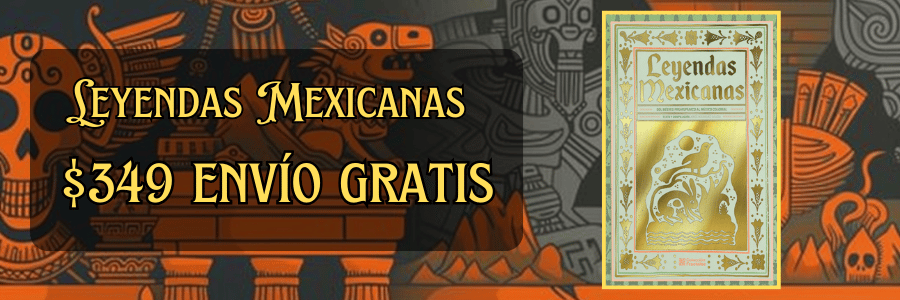Sacred Maya Sites: Ancient Cities and Temples
The Sacred Maya Sites are a testament to one of the most intricate civilizations that flourished in Mesoamerica. The Maya civilization, which emerged around 2000 BC and peaked during the Classic period between AD 250 and 900, left behind an extraordinary legacy of cultural, scientific, and architectural achievements. Spanning present-day Mexico, Belize, Guatemala, and Honduras, the ancient cities and temples of the Maya serve as a window into their complex society, rich mythology, and advanced understanding of astronomy and mathematics.
At the heart of Maya civilization were sprawling city-states, most notably Tikal, Palenque, Caracol, and Copan, which were interconnected by a series of trade routes. Each city was characterized by its unique architectural style and religious significance. Tikal, located in the jungles of northern Guatemala, is one of the most revered Maya archaeological sites. With its towering pyramids, vast plazas, and intricate carvings, Tikal symbolizes the grandeur of Maya architecture. Rising above the canopy are the iconic Temple I and Temple II, both significant ceremonial centers dedicated to various deities. The grand plaza is lined with stelae adorned with glyphs chronicling the lives of rulers, their achievements, and the divine connections they sought to maintain.
Another prominent site is Palenque, known for its impressive palaces and temples set within a lush landscape of tropical rainforest. The Temple of the Inscriptions is perhaps the most notable structure here, containing the tomb of the great ruler Pakal the Great. Inside, an extraordinary sarcophagus houses a richly adorned jade death mask, providing insight into the elaborate burial customs of the Maya elite. The inscriptions found in the temple are of profound historical importance, as they narrate the story of Pakal’s reign and the significance of the underworld in Maya cosmology.
Copan, located near the border of Honduras, is famed for its remarkable stelae and altars, intricately carved with glyphs that speak to the lineage of rulers and significant historical events. The hieroglyphic stairway at Copan is an awe-inspiring feature, comprising more than 2,000 individual glyphs that detail over a thousand years of history, from the city’s foundation to its eventual decline. The highly sophisticated artistry displayed at Copan provides evidence of the advanced skill of Maya sculptors, artists, and stone masons, highlighting the importance of record-keeping in their society and providing a rich tapestry of the cultural narratives that wove through religious and political life.
The ancient Maya were deeply spiritual, often intertwining their daily lives with religious practices infused with cosmological significance. Temples and ceremonial sites were not merely architectural achievements; they served as sacred spaces that facilitated communication with the gods. The construction of these sites reflected a profound connection to their environment, often oriented to celestial bodies. For example, the alignment of structures within sites like Chichen Itza in the Yucatan Peninsula showcased the advanced astronomical knowledge of the Maya, particularly in their observation of solstices and equinoxes. The famous El Castillo pyramid serves as a remarkable representation of this alignment, casting shadows that create a serpent-like effect during the equinoxes, embodying the deity Kukulkan.
Chichen Itza itself stands out as one of the most iconic of the sacred Maya sites, strongly associated with the later Yucatec Maya civilization. Known for its impressive architecture, sprawling plazas, and a ball court that speaks to the ritualistic sports central to Maya culture, Chichen Itza was a major economic and political center. The site features numerous edifices, including the Temple of the Warriors and the Group of a Thousand Columns, each revealing layers of historical continuity and the evolution of Maya architecture. The well-preserved cenote, a natural sinkhole, served both as a water source and a spiritual site where human sacrifices were offered to appease the gods, adding a further layer of complexity to understanding Maya religious practices.
The temple complexes were often adorned with elaborate stucco friezes, colorful paintings, and hieroglyphic inscriptions that articulated everything from mythological tales to astronomical events. The Maya were exceptional mathematicians and astronomers, and these skills informed their intricate calendrical systems. In their time, they developed the Long Count Calendar, which chronicled time and historical events from a mythical creation date. Their study of the stars and planets permeated their religion, influencing agricultural practices, ritual observances, and societal structures, all of which were essential to their survival and cultural identity.
Excavations and ongoing research at various Maya sites have unveiled a wealth of artifacts, such as pottery, sculptures, and ceremonial items. These objects provide crucial insight into Maya daily life, trade routes, and interaction with neighboring cultures. Excavations in the region of Belize, particularly at sites like Caracol and Altun Ha, have revealed intricate pottery and trade goods that suggest robust trade networks and cultural exchanges with other Mesoamerican civilizations, including the Aztecs and the Olmec. The ritual use of ceramics, particularly in the form of decorative offering vessels, demonstrates the deep spirituality embedded in everyday life for the Maya people.
As time advanced, many Maya cities faced the challenges of environmental changes, agricultural pressures, and social upheaval. The Classic Maya collapse in the 9th century is a subject of considerable debate among archaeologists and historians; however, it is widely posited that a combination of drought, resource depletion, and conflict led to the abandonment of many city-states, including Tikal and Copan. Despite this decline, other regions, particularly in the Yucatan, saw the rise of the Postclassic Maya, who adapted to new conditions and practices. This resilience demonstrates the dynamic nature of Maya civilization, where adaptation to change was essential for survival.
The ruins of these sacred sites remained largely undiscovered until the late 19th century, when explorers and archaeologists began to reveal the significant achievements of the Maya civilization. However, the process of uncovering and preserving these sites has faced numerous challenges, including looting, environmental degradation, and the impacts of tourism. Conservation efforts have become paramount to protect these invaluable cultural heritage sites for future generations.
Engagement with indigenous communities is vital in these conservation efforts; many descendants of the ancient Maya continue to inhabit these lands and maintain their cultural traditions. They possess a deep historical connection to the sacred sites, guiding efforts toward preserving their cultural heritage. Projects that involve local communities not only focus on physical preservation but also aim to revitalize and maintain indigenous languages, beliefs, and practices. This holistic approach underscores the importance of acknowledging and respecting the cultural narratives that persist alongside the historical ruins.
In the contemporary era, Maya sites serve as a nexus for cultural identity, pride, and education. Many scholars, artists, and community leaders argue that understanding the complexities of ancient Maya civilization provides critical insights into global cultural narratives, enhancing our understanding of human resilience and creativity. Moreover, the continued study of these sites sheds light on universal themes of spirituality, governance, and community, reminding us that the echoes of the past resonate in the present.
As we reflect on the significance of Sacred Maya Sites, it becomes evident that they represent not only architectural marvels but also profound cultural legacies. We recognize the necessity of safeguarding these sites against modern threats, while also embracing and honoring the living traditions of the Maya people who continue to draw strength from their ancestors. This dual commitment to preservation and cultural vitality is essential to ensuring that the story of the Maya civilization persists into the future, thereby enriching our collective understanding of human history and achievement.
In conclusion, the ancient cities and temples of the Maya offer an intricate tapestry rich with historical and cultural significance. Each site tells a story of innovation, spirituality, and the human spirit's capacity to adapt and thrive. From the towering pyramids of Tikal to the sacred waters of Chichen Itza, the legacy of the Maya civilization serves as both a reminder of its fascinating history and as a bridge connecting the past and present. The reverence for these sacred spaces must continue to guide conservation efforts, ensuring that they persist not only as archaeological wonders but as lasting symbols of an indomitable culture that continues to thrive.
Explore More:
| The Legacy of the Mexican War of Reform: A Century Later |
| The Legacy of the PRI’s Dominance in Mexican Politics |
| The Mexican-American War: A Clash of Military Strategies and Tactics |
| The Battle of Celaya: A Turning Point in the Mexican Revolution |
| The Growth of the Renewable Energy Market in Mexico |
| The Influence of Oil on the Politics of the Middle East |
| The Environmental Impacts of the Oil Industry: Challenges and Solutions |
| The Role of Political Factions in Mexico’s Independence War |
| Colonial Mexican Markets: Trade, Goods, and Economy |
| The Role of Disease in Weakening the Aztec Empire |



